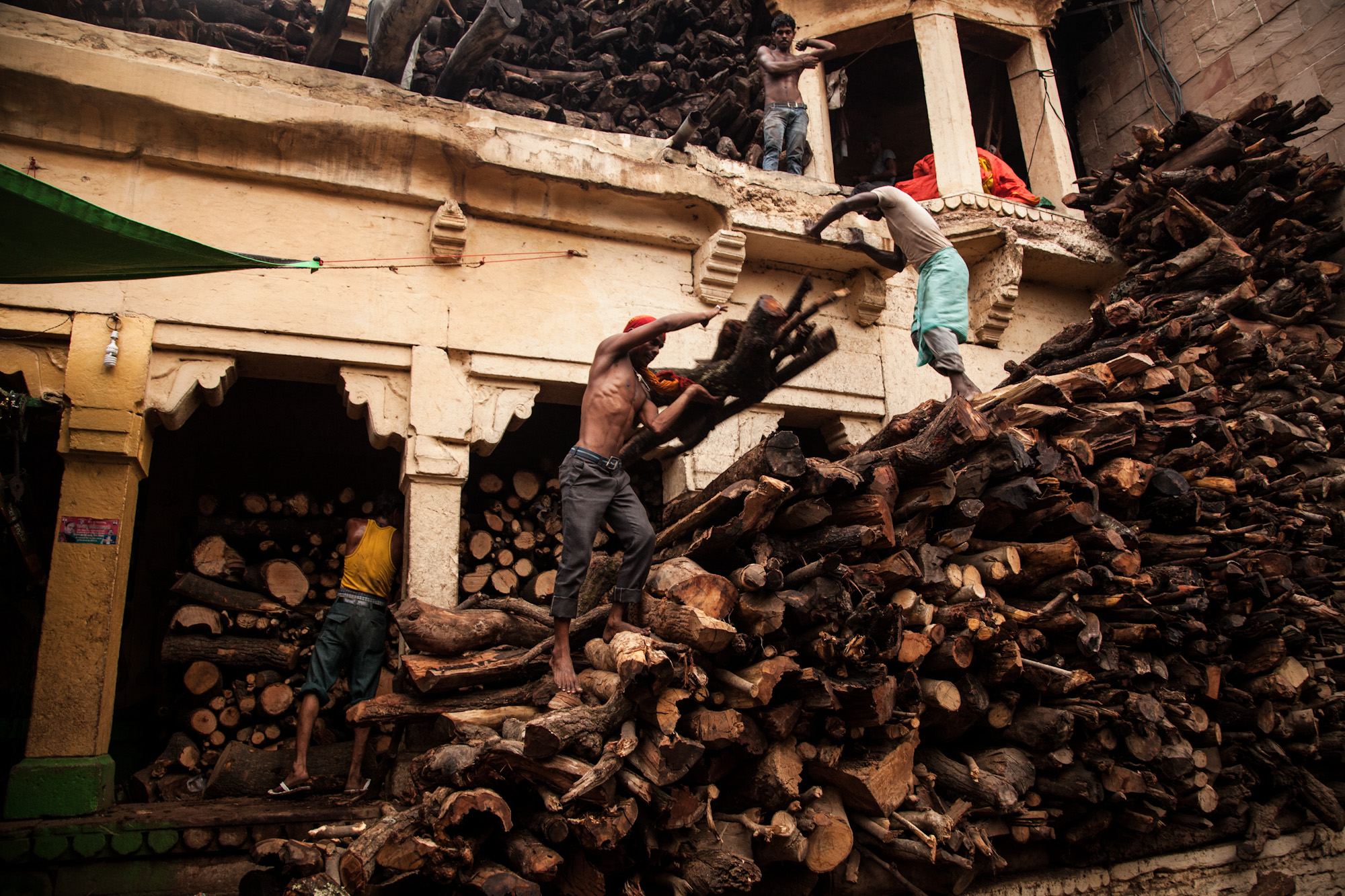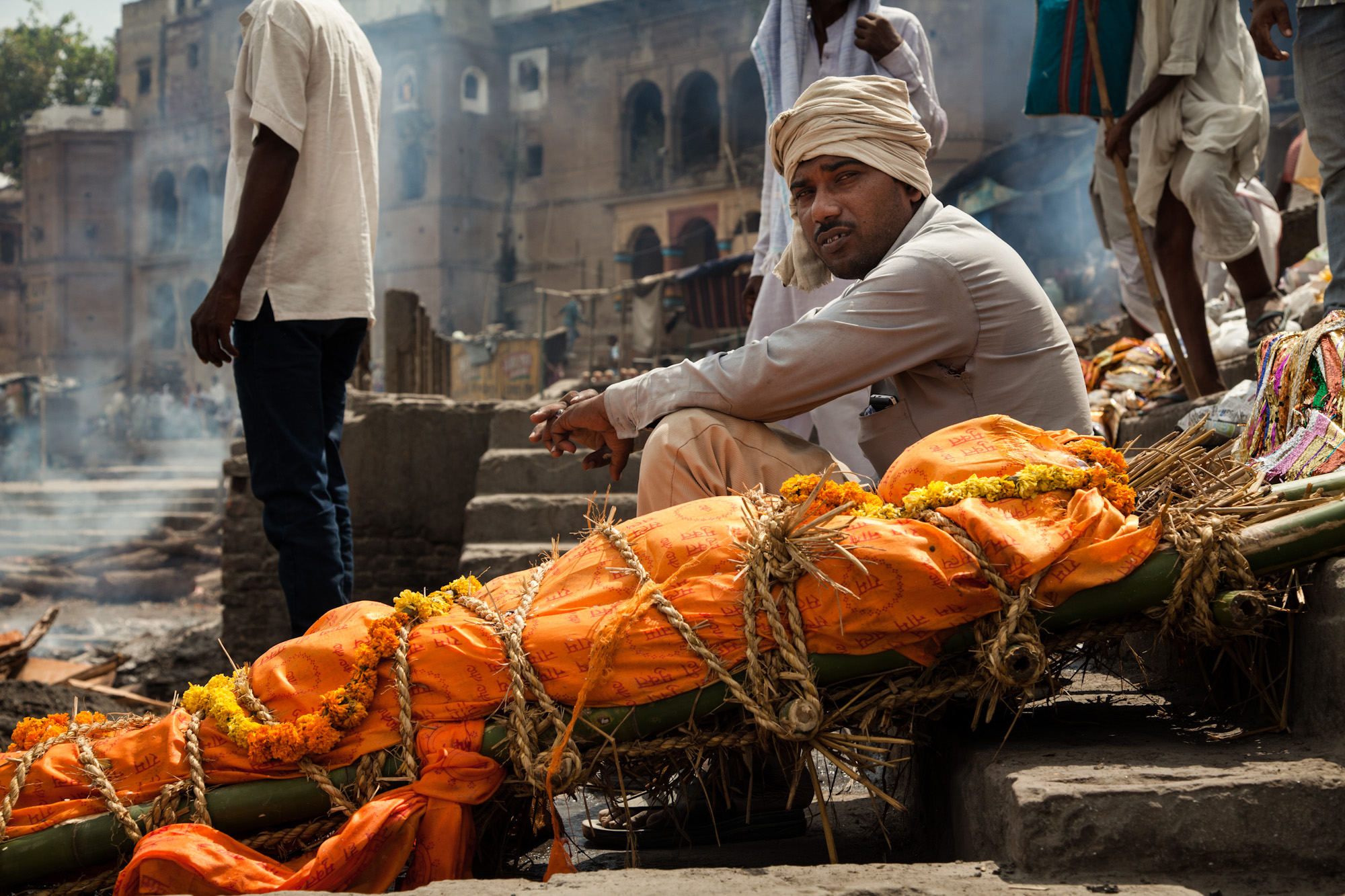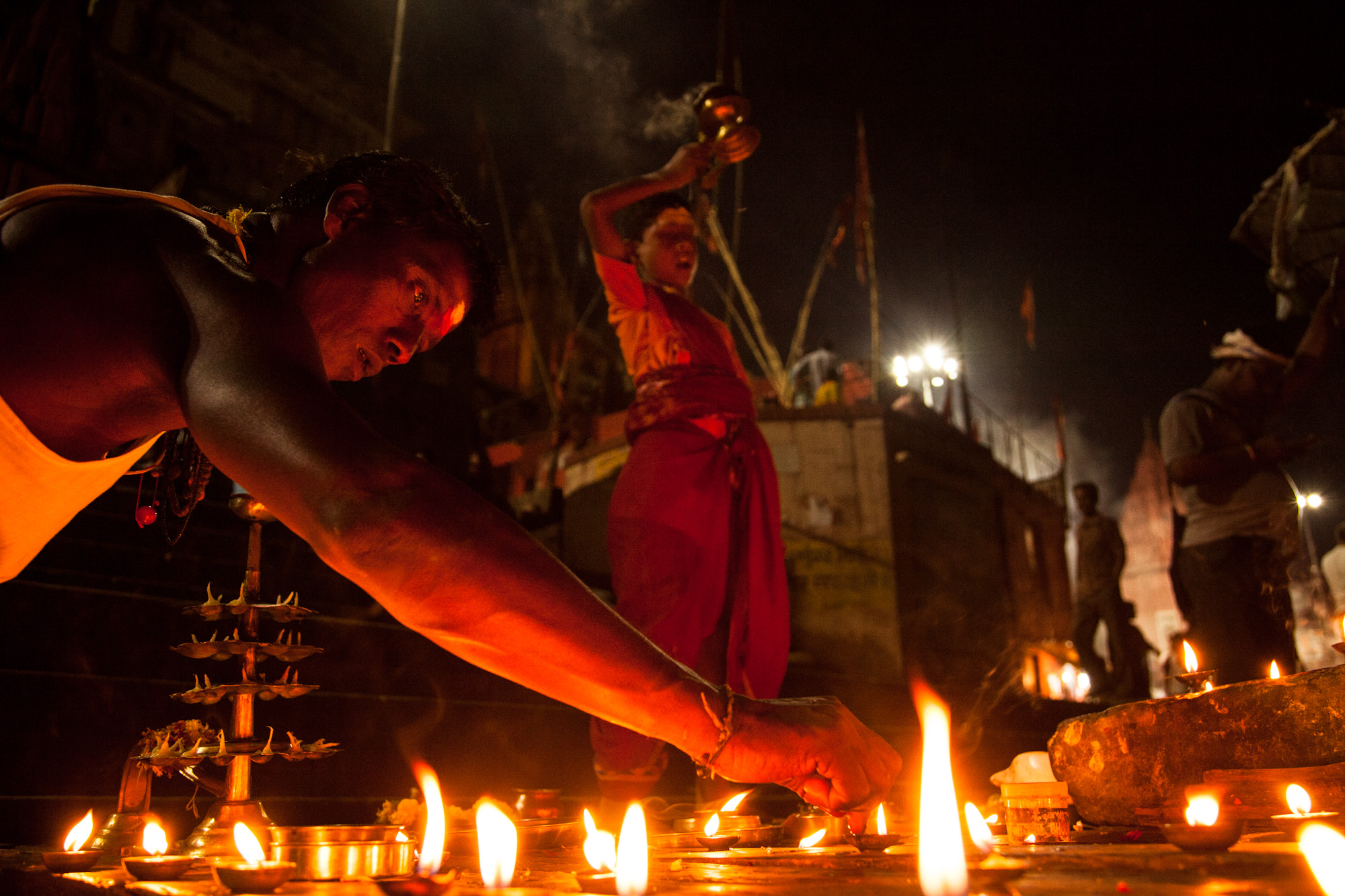Manikarnika Ghat

"The city illumines truth and reveals reality. It does not bring new wonders into the scope of vision but enables one to see what is already there. Where this eternal light intersects the earth, it is known as Kashi".
- Diana L. Eck
Varanasi, also known as Kashi or City of Light, is one of the world’s oldest inhabited cities, located in the very heart of the Hindu religion. Being the most auspicious place for a Hindu to be cremated, Varanasi offers to every Hindu who passes away in it moksha, the breaking of the circle of reincarnation. The city, located at the banks of the holy river Ganges, is the destination of thousands of pilgrims who walk down the steps leading to the river, known as ghats, to wash away their sins in its sacred waters. As a result, Varanasi is partially populated with elderly people living in hospices, known as mukti bhavans, and set up specifically for people who have traveled from all over India to die here. The busy life of the labyrinth of alleyways and temples is often interrupted by the presence of corpses carried in bamboo stretches, robed in orange gowns, and on the shoulders of doms, Hindu outcasts. Their final destination is Manikarnika, the main burning ghat, where they are doused in the Ganges one last time before cremation.
For hundreds of years, Manikarnika Ghat has been a place where people congregate, either to accompany the dead in this final stage of their lives or to contemplate the futility and the fragility of their own ones. As opposed to western culture, where death rituals take place away from public view and are very rarely discussed, Hindus participate in the most intimate rituals of life and death in public, and people consider it an honour to take part in these events.
I observe with fascination from a distance, trying not to interfere. Children playing, dogs fighting and buffaloes on their way to their daily bath in the Ganges, where doms strain the ashes looking for jewellery. Locals enjoy chai by the riverside, while I see people from the countryside who came to cremate a loved one, stare at me; some of them have never seen a westerner before. I am not able to stay at a distance for too long, soon a local grabs me by the hand and takes me to experience it up close.
When the body is placed on the pyre, a family member starts the cremation by lighting a bunch of straw from the Main Fire, a flame that is said to have been burning for more than 3000 years. The burning straw is then used to light the funeral pyre. The body burns as an offering to the god of fire, Agni, and the person’s soul will no longer be born again into this world.
With all the senses overwhelmed by the smell of the burning bodies, the overpowering heat and the sweat, and with wet eyes from the smoke I watch the body disintegrate to ash in just about twenty minutes. I cannot help but think about humanity’s capacity provide meaning for the most inevitable and uncertain event of existence, death, and how Hindus have created such a colourful, inspiring and compelling way to deal with it.
On the top of the ghat, huge piles of logs are brought from all over India. Every log is carefully weighed on giant scales so that the price of cremation can be calculated. There is an art to using just enough wood to completely incinerate a corpse. The quality of the wood determines its burning proprieties and its price. Sandalwood, being the most expensive material and only reserved for those families with high status who are often burnt in private metal cages.
The shore of the river Ganges goes up in flames and smoke rises day and night every day of the year, as more and more deceased are liberated from their burden. Doms begin to clear up the resulting ashes from flesh, bone and wood and throw them into the river, preparing for the next cremation.
Photography and words by Manu Valcarce.




















